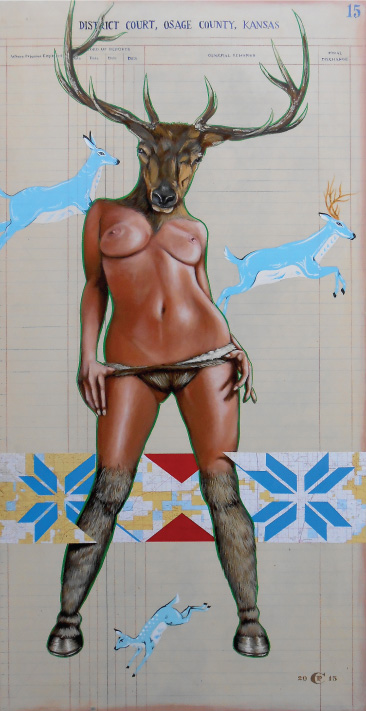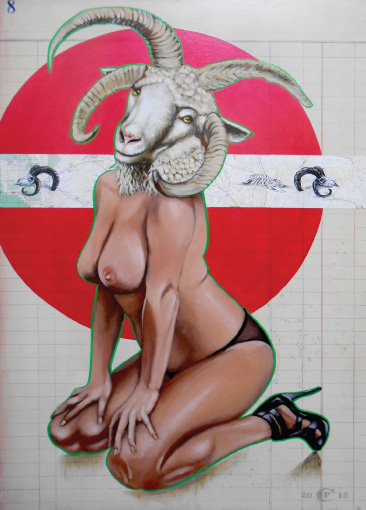
“Traditions have to change and evolve in order to stay relevant and alive,” says Chris Pappan, a Chicago-based artist of Kaw, Osage, and Cheyenne River Sioux heritage. About seven or eight years ago, Pappan began creating works that referenced traditional American Indian ledger drawings of the mid-to-late nineteenth century. Old paper, such as sheets from U.S. Calvary recruitment ledgers and 1930s receipt books, form the repurposed backdrop for his contemporary renderings of ancestral themes.
Pappan’s compositions are charged with subtle political and cultural commentary and composed of figures masterfully created in pencil, graphite, and mixed media. He also produces larger acrylic paintings in the same style. Subject matter is often inspired by his base materials-for example, he has used U.S. Cavalry paper to portray warriors or refer to specific historic battles.

The artist doesn’t avoid edgier interpretations either. His works depicting American Indian women are an evocative twist on old school pin-up beauty. They are intentionally erotic but with an overtone of feminist power and confidence. Moving away from stereotypical representations form the foundation of Pappan’s art. Each piece suggests a story and he invites his viewers to be a participant as it unfolds before them.

Recently, Pappan traveled to Australia as one of four artists chosen for the Landmarks Fellowship Project with the renowned Tamarind Institute of Albuquerque, NM. He has also been honored by the Southwestern Association of Indian Artists (SWAIA) and has repeatedly taken top Heard Museum awards during the Santa Fe Annual Indian Market.
In addition to private collections around the world, Pappan’s artworks can be found in several prominent museum collections, including the National Museum of the American Indian in Washington DC; the James T. Bialic Native American art collection at the Fred Jones Jr. Museum of Art in Norman, OK; the North America Native Museum in Zurich Switzerland; the Spencer Museum of Art in Lawrence, KS, and the Schingoethe Center for Native American Cultures in Aurora, IL.





